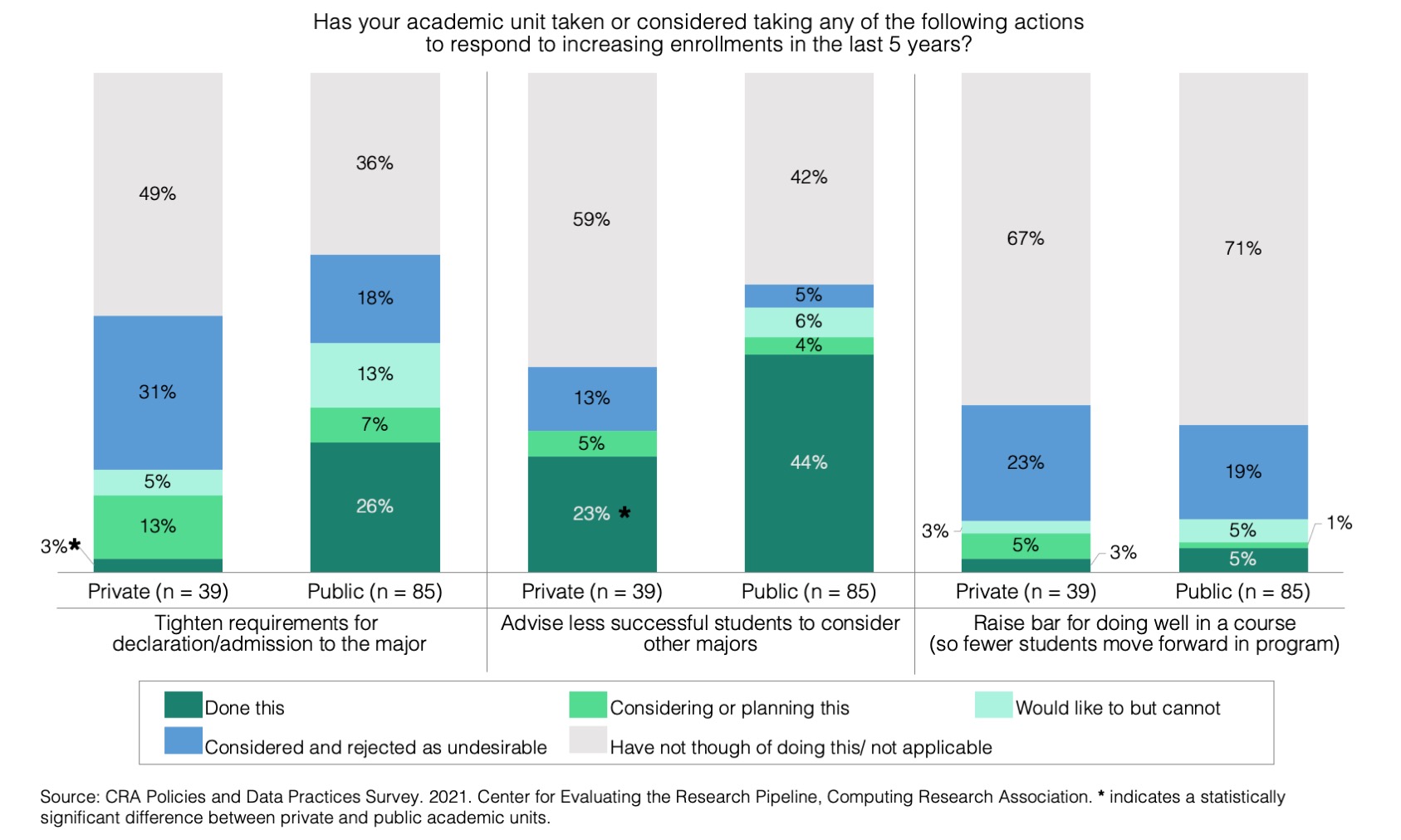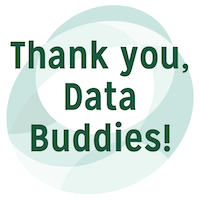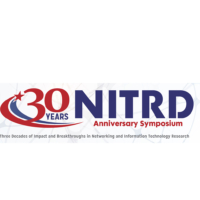Responses of Academic Units in Public and Private Institutions to Increasing Enrollments in Computing

The graphic presented here summarizes data about departmental practices to respond to increasing enrollments in computing broken down by private and public higher education institutions. These data are taken from the new Policies and Data Practices Survey that CRA’s Center for Evaluating the Research Pipeline (CERP) launched in 2021 to collect data from computing departments about the policies and data practices related to issues relevant for broadening participation in computing (BPC).
The findings indicate that there were some differences in the type of actions taken by private and public higher education institutions in the survey sample. Specifically, academic units in private institutions were significantly less likely to tighten their admission/enrollment requirements and to advise less successful students to consider other majors compared to those in public institutions.
It is also worth noting that among the three practices asked about in the survey, most institutions did not consider or find applicable the option of raising the bar for doing well in a course to reduce the number of students moving forward in their program.
Departmental policies and practices for regulating enrollment in their majors can have significant consequences for which students are able to earn a degree in computing. Certain practices may systematically discriminate against students from various demographic, socio-economic, or academic backgrounds. For instance, requiring prior experience in computing for admission to the major is likely to alienate students from disadvantaged socio-economic backgrounds as they may not have had access to AP courses or other training prior to entering college. Ultimately, policies and practices that result in systematically uneven treatment of certain groups of students over others can perpetuate the lack of diversity in the field of computing.
Notes:
- The Policies and Data Practices survey was sent to all academic units that participate in the Taulbee Survey and/or the Data Buddies Project. A total of 128 academic units (42 private, 86 public) responded to the survey.
- The question used in this analysis was: “Some institutions have reported taking some of the actions listed below in response to increasing enrollment. Has your academic unit taken or considered taking any of the following actions in the last 5 years?”.
- The following actions were listed as part of the question: Tighten requirements for declaration/admission to the major, Advise less successful students to consider other majors, Raise bar for doing well in a course (so fewer students move forward in program).
- The response options for this question were: Done this; Considering this or Planning this: Considered and rejected as undesirable; Would like to, but cannot: Haven’t thought of doing this; Not Applicable. For the purposes of this analysis the last two options were combined.
 This analysis is brought to you by the CRA’s Center for Evaluating the Research Pipeline (CERP). CERP provides social science research and comparative evaluation for the computing community. Subscribe to the CERP newsletter here. Check out CERP’s activities and find out how to engage on CERP’s website.
This analysis is brought to you by the CRA’s Center for Evaluating the Research Pipeline (CERP). CERP provides social science research and comparative evaluation for the computing community. Subscribe to the CERP newsletter here. Check out CERP’s activities and find out how to engage on CERP’s website.
BPCnet.org, BPC Plan Workshops, and BPC Plan Consultancy are supported by the National Science Foundation (NSF) awards CNS-1940460 and CNS-2032231. Any opinions, findings, and conclusions or recommendations expressed in this material are those of the author(s) and do not necessarily reflect the views of the National Science Foundation.









